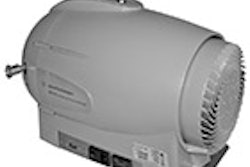This article originally ran in the June 2013 issue of Food Manufacturing.
The Food Manufacturing Brainstorm features industry experts sharing their perspectives on issues critical to the overall food industry marketplace. In this issue, we ask: What plant sanitation techniques can food processors employ to improve food safety in their facilities?
Food processors know that keeping work areas clean is of paramount importance and eliminating hygiene issues is critical to the survival of their businesses. An outbreak of salmonella traced back to a food establishment can negatively impact a business, which is why food processors have embraced steam heat as one of the best options for dealing with potential contaminants in processing and packaging environments.
Due to the effectiveness of steam heat in eliminating pathogens such as staph, E. coli, salmonella and Listeria, steam sanitizing has become a widely used sanitation technique. Extremely high heat is needed to eliminate bacteria and viruses — for example, norovirus and Norwalk viruses are killed at temperatures above 140°F and since steam cleaners generally operate above 284°F, they can be quite effective at killing bacteria, germs and viruses.
We’ve found the most effective cleaning technique is actually a process and can be broken down into three components:
Plan — Identify all items and surfaces that contact food product. These can range from knives, cutting boards and conveyor systems to gloves, storage areas and cleaning tools.
Schedule — Develop a daily schedule for cleaning and to stick with it.
Action — Manage the cleaning process and make sure all cleaning tasks are completed. This will minimize any chance of an outbreak.
And, of course, after cleaning, you need to clean your cleaning tools. By planning and implementing a consistent cleaning program, you can improve food safety at your facility.























